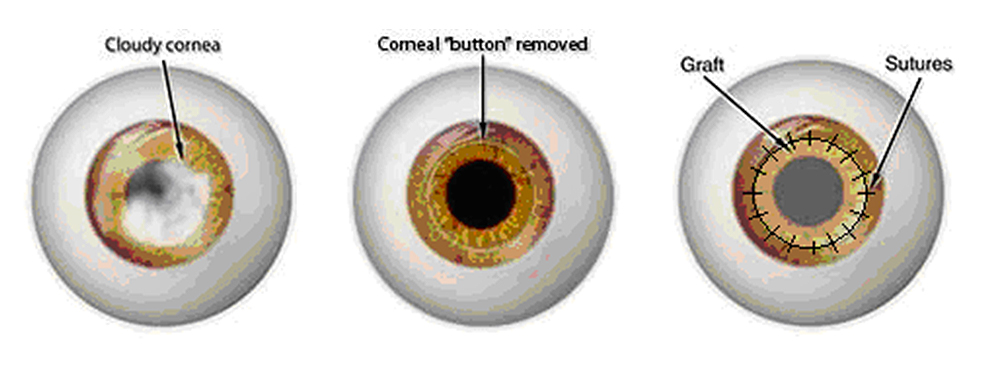Corneal Transplantation
A corneal transplant is a surgery to replace the clear front part of the eye due to disease or scarring. A cornea transplant can restore vision, reduce pain and improve the appearance of a damaged or diseased cornea. A cornea transplant, also called keratoplasty, is typically performed as an outpatient procedure, which means you do not require an overnight stay at the hospital.
The purpose of a corneal transplant is the improve vision by replacing the diseased or scarred cornea with healthy tissue. The graft that is used for transplantation is a human donor cornea that has been donated from a local eye bank.
Most cornea transplant procedures are successful. But cornea transplant carries a small risk of complications, such as rejection of the donor cornea. Even so, many rejection episodes can me managed with eye drops such that good vision is maintained.

A number of condition can be treated with a corneal transplant, such as:
- Keratoconus
- Scarring of the cornea due to trauma or eye infections
- Irregular shape of the cornea
- Complications from LASIK
- Corneal swelling (edema)
- Corneal clouding
The day of surgery:
Corneal transplantation is generally performed as outpatient, which means you go home the same day of surgery and do not require an overnight stay in the hospital.
An anesthesiologist provides sedation by administering medication through your vein (intravenously). A numbing injection is then given to the eye being operated on so you cannot move your eye or feel anything during the surgery. You do not feel this injection.
A lid speculum is placed to keep your eyelids open and your cornea is removed using a special blade. The donor cornea is then inspected and cut to fit your eye, then sutured in with stitches that are thinner than a strand of hair. These sutures may be removed at a later date by the surgeon.
After your corneal transplant:
Recovery from corneal transplantation can take 6 months to 1 year, or sometimes even longer. There will be several eye drops that you will need to use, and at first you may be using eye drops every hour while awake.
You can expect your vision to be very blurry at first. In the initial stages following surgery, it is normal for your vision to be more blurry than it was prior to surgery.
You will receive a few eyedrops and possibly oral medications as well, immediately after cornea transplant and continuing during your recovery. This will help to prevent rejection of the donor graft, infection, swelling and pain.
You will go home from the surgery wearing a protective metal eye shield and a gauze patch. You will need to wear your eye shield continuously for the first day or two and then only at night for the two weeks.
It is important to protect your eye from injury. Plan to take it easy after your cornea transplant, and slowly work your way up to your normal activities, including exercise. For the rest of your life, you’ll need to take extra precautions to avoid hurting your eye. For instance, you will need to wear safety glasses or eye protectors in situations that carry even a small risk of eye injury, such as sports.
You must return for frequent follow-up exams. Frequent eye exams are necessary to check for complications in the first year after your surgery. Usually, eye exams are every week at first, then gradually decrease to every few months.
Expectations:
Sight after a cornea transplant depends on the reason for your surgery and your health conditions. Most people who receive a cornea transplant will have their vision at least partially restored.
Your risk of complications and cornea rejection continues for years after your cornea transplant. For this reason, expect to see your eye doctor annually. The risk of rejection is about 20% (out of every 5 patients that undergo a corneal transplant, 1 may experience a rejection episode). Luckily, rejection can often be managed with medications.
Once the outer layer of your cornea has healed — usually at least 6 months after surgery — your eye doctor will work to make adjustments that can improve your vision, such as removing stitches that are causing an irregular shape of the cornea (astigmatism) and/or giving glasses or contact lenses.



